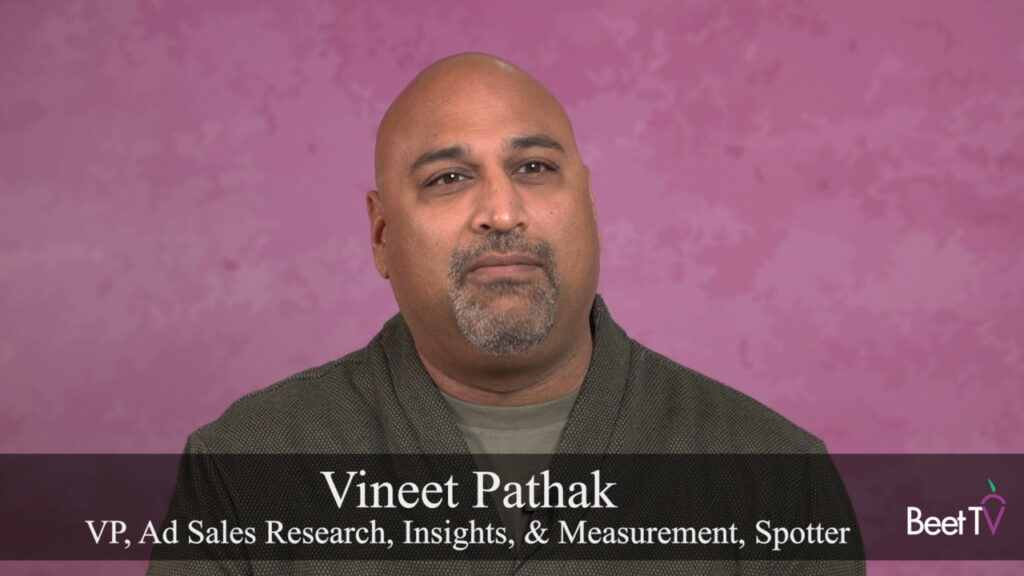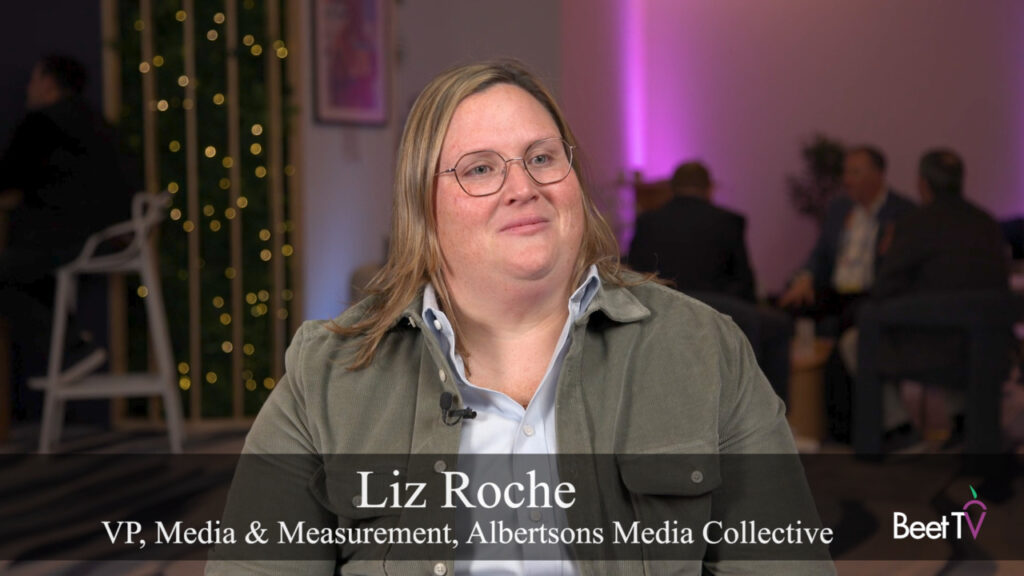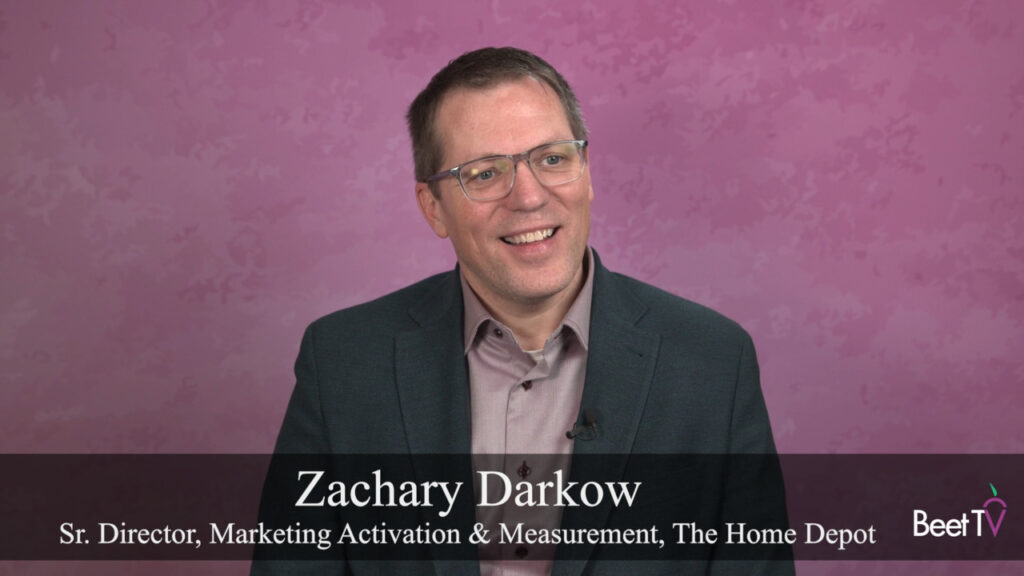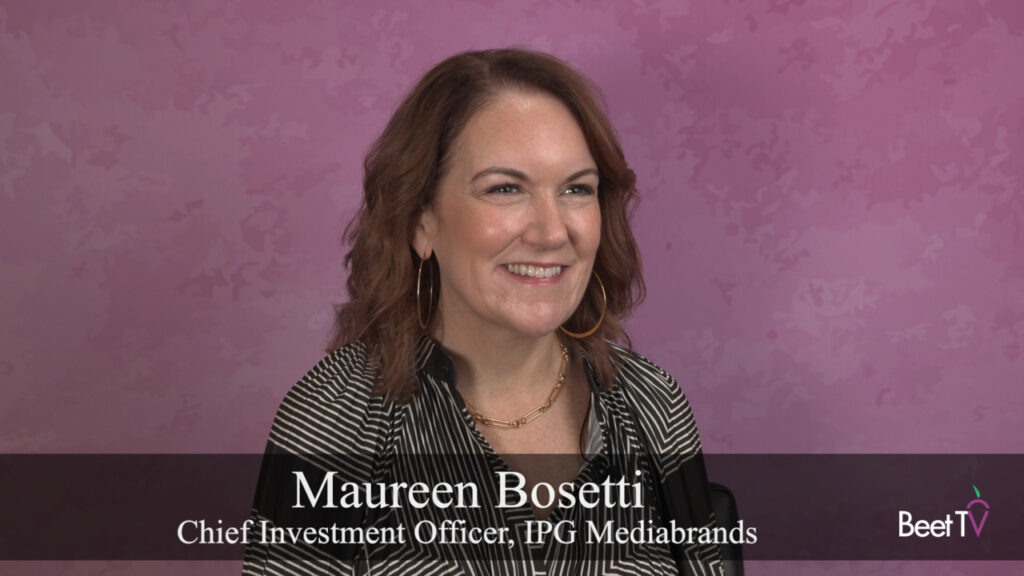LAS VEGAS – Television programming and advertising are being distributed through the internet with the advent of streaming video to connected devices. But the United States still has a significant broadcasting infrastructure of about 1,400 commercial TV stations. Their adoption of new technologies has been notoriously slow because spectrum is treated as a limited resource that must be regulated for the good of the public.
“There’s been a lot of change in how people buy media and think about buying media, but one of the big challenges is that the systems that we utilize to transact that media are still separate,” Michele Stone, vice president of advanced advertising product and planning at Paramount, said in this interview with Beet.TV contributor Tameka Kee at the NAB Show.
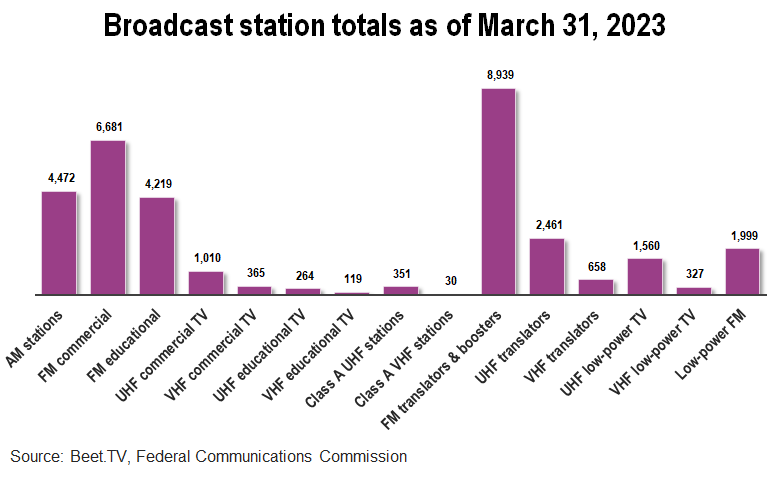
“There is no such thing as home watching TV versus CTV — everything is on a screen — but the way that you serve those ads is very different,” Stone said. “Having systems that allow you to buy and transact in that way is also increasingly important as viewership trends have shifted.”
The television marketplace is taking gradual steps to converge broadcast and internet-enabled media channels.
“Those convergent systems are now just emerging in the marketplace,” Stone said. “Everybody is still trying to figure out what is the right way to approach that convergent activation, planning, trafficking, invoicing process.”
In the realm of advanced advertising that offers more audience segmentation, media companies have worked through a variety of technical hurdles.
“For our advanced advertising deals that we run as convergent deals across all broadcast, cable, digital, addressable, we had to kind of connect our systems and our processes to a lot of different systems to make it all work,” Stone said. “There’s a lot of great movement in the space, but it’s going take some time to get there.”














